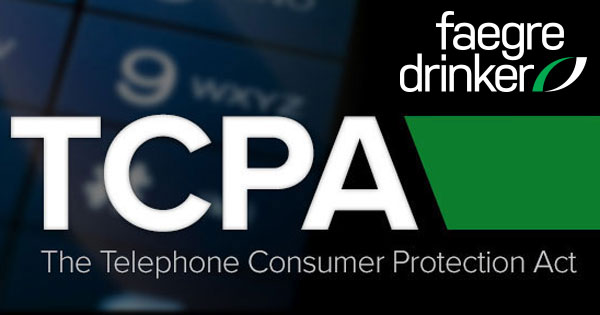On June 25, 2020, the FCC issued a Declaratory Ruling that granted a Petition that had been filed in 2018 by the P2P Alliance—a “coalition of providers and users of peer-to-peer (P2P) text messaging services.” The Petition had asked the FCC to clarify whether texts sent via its messaging platform were subject to the TCPA restrictions on automated dialing. The FCC did not decide if the Petitioner’s messaging platform is an autodialer, as the record was not sufficient to do so. But it did clarify in the abstract that, “if a texting platform actually requires a person to actively and affirmatively manually dial each recipient’s number and transmit each message one at a time and lacks the capacity to transmit more than one message without a human manually dialing each recipient’s number… then such platform would not be an ‘autodialer’ that is subject to the TCPA.”
The Petition
The P2P Alliance had asserted that its messaging platform did not qualify as an ATDS because it could not “us[e] a random or sequential number generator” to “store or produce telephone numbers to be called.” Instead, it required “a person to actively and affirmatively manually dial each recipient’s number and transmit each message one at a time,” and it enabled users to choose whether to send a prepared script, modify the script before sending, or draft unique message content.
The Declaratory Ruling
The FCC first clarified “that the fact that a calling platform or other equipment is used to make calls or send texts to a large volume of telephone numbers is not determinative of whether that equipment constitutes an autodialer.” Instead, “whether the calling platform or equipment is an autodialer turns on whether such equipment is capable of dialing random or sequential telephone numbers without human intervention. If a calling platform is not capable of dialing such numbers without a person actively and affirmatively manually dialing each one, that platform is not an autodialer and calls made using it are not subject to the TCPA’s restrictions.”
The FCC explained that its ruling was rooted in the plain language of the statute. In light of the statute’s definition of an ATDS, it explained, “only technology that has the capacity to store or produce numbers to be called using a random or sequential number generator, and to dial such numbers, is deemed to be an autodialer. Whether a certain piece of equipment or platform is an autodialer turns on whether it is capable of performing those functions without human intervention, not whether it can make a large number of calls in a short time.”
The FCC closed by rejecting one commenter’s suggestion that a broad interpretation of the ATDS definition would deter “spammers” from using P2P systems to “evade” the TCPA. It explained that “[t]he TCPA does not and was not intended to stop every type of call. Rather, it was limited only to calls made using an autodialer or an artificial or prerecorded voice. If a text platform is not capable of storing or producing numbers to be called using a random or sequential number generator and dialing such numbers automatically but instead requires active and affirmative manual dialing, it is not an autodialer and callers using it are, by definition, not ‘evading’ the TCPA.”
Implications
The Declaratory Ruling is notable not only for what it decided but also for what it did not decide, at least not explicitly. As our regular readers know, this ruling comes in the wake of several federal appellate decisions that have analyzed the statutory definition of an ATDS. It also comes during the pendency of the FCC’s own proceeding on the issue, which was prompted by the D.C. Circuit’s decision in ACA International v. FCC, 885 F.3d 687 (D.C. Cir. 2018). For purposes of this Declaratory Ruling, the FCC explained, it would simply “rely on the statutory definition of autodialer.”
If the Declaratory Ruling is any indication, however, the FCC is prepared to hew closely to the plain language of the statute, regardless of whether that leaves some equipment or calls beyond its reach. Indeed, it would not be unreasonable for defendants in the Ninth and Second Circuits to argue that this ruling implicitly rejects the seemingly limitless reading those courts have given to the ATDS definition. Whether trial courts in those Circuits would agree with that, or would defer to the FCC’s interpretation even if they did, is of course another matter.
We will report back as these issues continue to develop.

